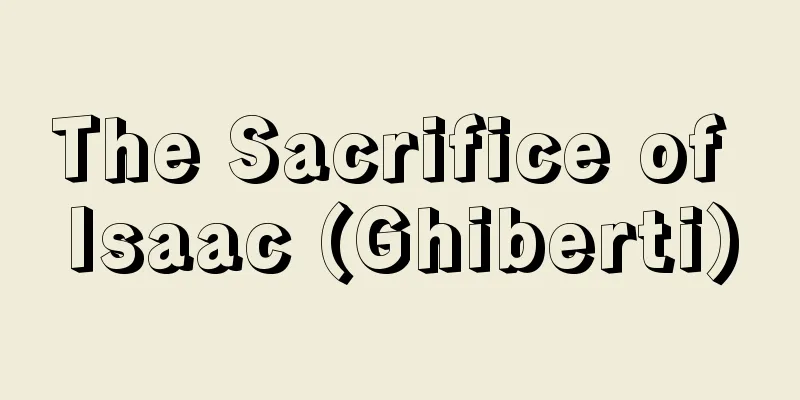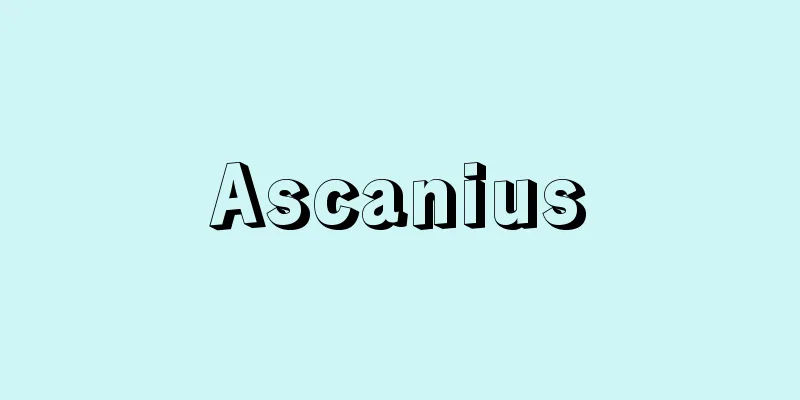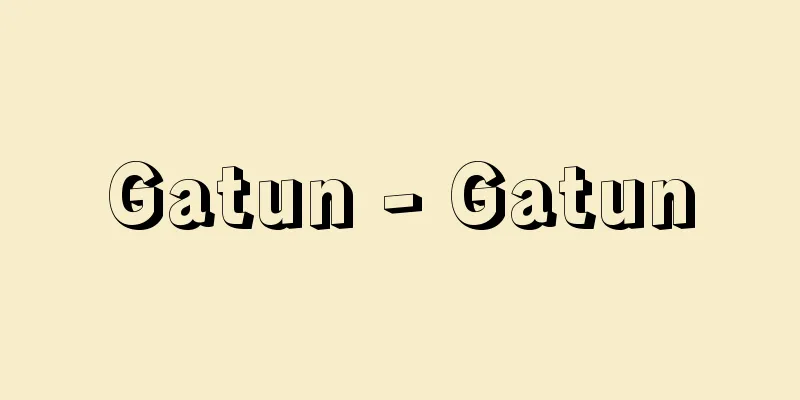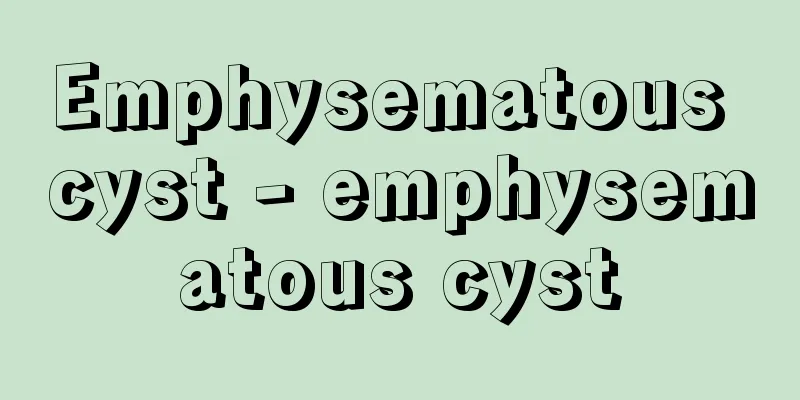False accusation
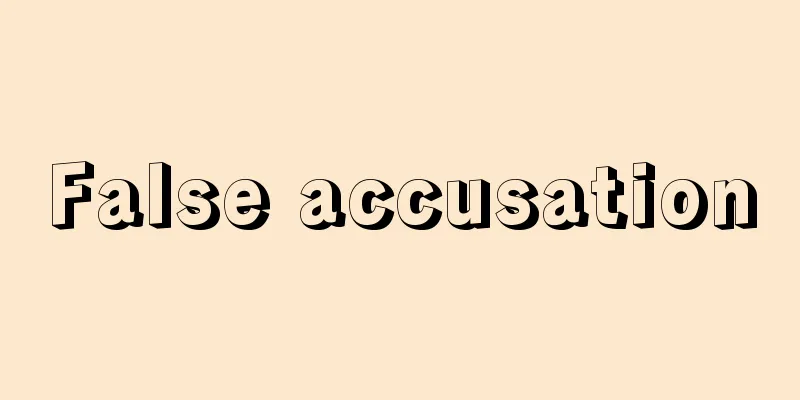
|
Generally speaking, it means a false accusation, but it is not a legal term and its meaning has not been determined in the legal system. Cases where a person is falsely accused are not necessarily relieved by an acquittal in court, and it is impossible to statistically confirm the number of such cases, but the existence of wrongful convictions cannot be denied. Relieving such cases of wrongful conviction is extremely difficult, and in many cases the path to relief is only opened by a rise in social interest. [Oide Yoshitomo] Notable false accusations in historyFor example, one famous case in history is the Jean Calas case, which occurred in France in 1761. Jean was accused of murdering his eldest son for religious reasons, and although he continued to maintain his innocence, he was executed. Later, the philosopher Voltaire worked tirelessly to clear his name, and three years after his execution, he was acquitted at a retrial. Also in France, in 1894, Captain Alfred Dreyfus was court-martialed and sentenced to lifelong exile for leaking secrets from the General Staff, and the rescue efforts of the writer Emile Zola are well known. Dreyfus was finally acquitted at a second retrial in 1906. In addition, in a robbery that occurred in the United States in 1920, two anarchists, Sacco and Vanzetti, were found guilty and sentenced to death. Until the death sentence was finalized, a worldwide protest movement was launched, including the support of the Rescue Committee established in the country as well as the French literary scholar Anatole France, but the death sentence was carried out in 1927. However, 50 years later in 1977, the governor of Massachusetts, who carried out the executions, declared that the trial of the Sacco-Vanzetti case was unfair and that the honor of the two men should be rehabilitated. In Japan, many cases, including the High Treason Case involving Kotoku Shusui and others in the Meiji Period, have attracted attention as cases of false accusations, but before World War II, it was not easy to protest that someone was falsely accused once a guilty verdict was confirmed, unless the real culprit showed up, notwithstanding the fact that it was possible before the guilty verdict was finalized. In fact, a request for a retrial of the High Treason Case was not made until 1961 (Showa 36), after the war, and two men, Yoshida Ishimatsu (the Yoshida Ishimatsu case, also known as the Yoshida Gankutsuou case) and Kato Shinichi (the Kato case), who were both sentenced to life imprisonment for murder in the early Taisho Period, were finally found not guilty in a retrial after the war (Yoshida in 1963, Kato in 1977). However, the increased interest in false accusations and progress in relief after the war did not come about overnight. The background to this was the national movement of criticism of trials that developed in the mid-1950s, triggered by the critical writings of Hirotsu Kazuo, a writer who was likened to Zola in the Dreyfus Affair, and the critical activities of defense lawyer Masaki Hiroshi in the Yakai Affair that occurred in 1951. In the midst of this, the Supreme Court successively overturned the guilty verdicts of the first and second trials in the Futamata, Hanamaki, Sachiura, Hachijojima, Yakai, Ojima, and Matsukawa cases. Requests for retrials also became more active, and not only for the High Treason Case, but also for cases that had occurred in the 1940s and had already been finalized, such as the Tokushima Radio Merchant Murder Case (a murder case that occurred in Tokushima City in 1953, in which the defendant was sentenced to 13 years in prison, but was found not guilty in a posthumous retrial in early 1985) and the Menda Case (a robbery-murder case that occurred in Hitoyoshi City, Kumamoto Prefecture in 1948, in which the defendant was sentenced to death, but was found not guilty in 1983), but at this stage the only case in which a retrial was initiated for a serious crime was that of Yoshida Ishimatsu. Relief through retrials for cases that occurred in the 1940s had to wait until the 1970s. [Oide Yoshitomo] False accusations from the 1960s onwardsIn the 1960s, on the other hand, acquittals were finalized for cases that had occurred in the 1950s, such as the Hakkai, Ome, and Tatsuno cases, which had been claimed to be false accusations, and the relief movement for the Niho case made great strides with the participation of many legal researchers. On the other hand, the 1960s saw the occurrence of cases for which retrials have been requested in the past or are still being requested today, such as the Nabari Poisoned Wine Case (murder that occurred in Nabari City, Mie Prefecture in 1961, death penalty), the Gotsu Case (murder that occurred in Gotsu City, Shimane Prefecture in 1962, life imprisonment), the Sayama Case (robbery and rape and murder that occurred in Sayama City, Saitama Prefecture in 1963, life imprisonment), the Hasaki Case (murder that occurred in Hasaki Town, Ibaraki Prefecture (now Kamisu City) in 1963, death penalty), the Hakamada Case (robbery and murder and arson that occurred in Shimizu City, Shizuoka Prefecture (now Shizuoka City) in 1966, death penalty), and the murder of a Nissan Sunny night watchman (robbery and murder that occurred in Iwaki City, Fukushima Prefecture in 1967, life imprisonment). In the 1970s, many false accusations occurred, including the Toyohashi family murder (Toyohashi false accusation case), the Omori Kangyo Bank case, the Tokyo Metropolitan Fuji High School arson case, the Tsuchida residence, Nippon Oil and Peace can bombing case, and the bombing of the superintendent's official residence, but all of them were ultimately found not guilty. Furthermore, as a movement for a retrial of the Shiratori case spread nationwide, the Supreme Court handed down the Shiratori decision in 1975, which stated that "in order to open a retrial, it is sufficient to create reasonable doubt about the findings of fact in the final judgment" (Supreme Court First Petty Bench decision of May 20, 1975). This decision opened the door to retrials, and cases such as the aforementioned Kato case, the murder of a professor's wife at Hirosaki University, which occurred after World War II and up until the mid-1950s (murder that took place in Hirosaki City, Aomori Prefecture in 1949, 15 years in prison, acquitted in 1977), the Yoneya case (rape and death that took place in Kodate, Takada Village, Aomori Prefecture (now Aomori City) in 1952, 10 years in prison, acquitted in 1978), the murder of a radio shop owner in Tokushima, the Umeda case (robbery and murder that took place in Kitami City, Hokkaido in 1950, life imprisonment, acquitted in 1986), and the Fukawa case (robbery and murder that took place in Fukawa, Tone Town, Ibaraki Prefecture in 1967, life imprisonment, acquitted in 2011), among others, have resulted in acquittals in retrials. These included four cases in which the death penalty had already been finalized: the Menda case, the Saitagawa case (a robbery-murder case that took place in 1950 in Saita-cho, Kagawa prefecture (now Takamatsu city); death penalty; acquitted in 1984), the Matsuyama case (a robbery-murder and arson case that took place in 1955 in Matsuyama-cho, Miyagi prefecture (now Osaki city); death penalty; acquitted in 1984), and the Shimada case (a rape-murder case that took place in 1954 in Shimada city, Shizuoka prefecture; death penalty; acquitted in 1989). As relief through retrials progressed from the late 1970s through the 1980s, many cases were found not guilty through normal proceedings. This was symbolized by the Supreme Court's successive overturning of guilty verdicts in the Yamanaka case (death penalty), the Niigata hit-and-run case, and the Itabashi indecent assault case in 1989. [Oide Yoshitomo] The causes of false accusationsIn the midst of this, investigations into the causes of false convictions have been carried out, and the main causes that have been pointed out are the identification of suspects based on prejudice and bias by investigative agencies, the coercion of confessions in closed-door situations using substitute prisons, and overconfidence in confessions. As a result, reforming criminal procedures that place too much emphasis on confessions has become an urgent task, and discussions have progressed on methods for checking whether confessions can be used as evidence (admissibility) and whether confessions are credible (probative value). However, retrials were not granted in the cases of Nabari, Sayama, Hakamada, and others who claimed to have been falsely accused and requested a retrial, and a decision to open a retrial in the Nissan Sunny case was revoked. The Prison Law was abolished in 2007, but the substitute prison system remains in place as the substitute penal institution system, the possible time of physical detention has not been shortened, and long interrogations in closed rooms have not been eliminated. False accusations are still not eliminated. [Oide Yoshitomo] "Law Seminar Special Issue: Japan's False Accusations" (1983, Nippon Hyoronsha)" ▽ "The Crow Affair by Voltaire, translated by Nakagawa Makoto (Toyamabo Encyclopedia Library)" ▽ "The Dreyfus Affair by Pierre Miquel, translated by Watanabe Kazutami (Hakusuisha, Que sais-jes Paperback)" ▽ "Frame Up" by Okogi Shinzaburo (Iwanami Shinsho)" ▽ "The Hakkai Incident by Masaki Hiroshi (Chuko Shinsho)" ▽ "Japan's Dark Fog" by Matsumoto Seicho ▽ "The Labyrinth in the Corner" by Kaiko Takeshi (1983, Mainichi Shimbun)" ▽ "Modern Retrials and False Accusations: A Brief History" edited by Takezawa Tetsuo and Yamada Zenjiro (1993, Equality)" ▽ "Continued Retrials" edited by the Japan Federation of Bar Associations (1986, Nippon Hyoronsha)" ▽ "Japan Federation of Bar Associations (ed.), "Human Rights in Japan: Challenges for the 21st Century - Japan's Fourth Meeting on the 1998 International Covenant on Human Rights (Civil Rights)" (1999, Gendaijinbunsha) [References] | | | | | | | | | | | | | | | | | | | | | | | |Source: Shogakukan Encyclopedia Nipponica About Encyclopedia Nipponica Information | Legend |
|
一般に無実の罪をいうが、法律用語ではなく、法制度上その意義が確定されているわけではない。冤罪によって起訴された事件が、裁判で無罪判決により救済されるとは限らず、その件数を統計的に確認することは不可能だが、誤った有罪判決の存在を否定することはできない。そのような誤判事件の救済は困難を極め、社会的関心の高揚によって初めて救済への道が開かれることも少なくない。 [大出良知] 歴史上著名な冤罪事件たとえば、歴史上著名な事件として、1761年にフランスで発生したジャン・カラス事件がある。宗教上の理由から長男を殺害したとされたジャンは、潔白を主張し続けたが死刑に処せられた。のちになって哲学者ボルテールが冤罪をそそぐため精力的に活動することとなり、処刑後3年を経てではあったが、再審で無罪判決が言い渡されることになった。同じフランスで、1894年に参謀本部の機密を漏洩(ろうえい)したとして軍法会議で終身流刑に処せられたアルフレッド・ドレフュス大尉の事件(ドレフュス事件)では、文学者エミール・ゾラの救援活動があまりにも有名である。ドレフュスは1906年になって二度目の再審でようやく無罪となった。 また、アメリカで1920年に発生した強盗事件で、2人の無政府主義者サッコとバンゼッティが犯人とされ、死刑判決が確定した。死刑確定まで、国内に設立された救援委員会はもちろん、フランスの文学者アナトール・フランスの支援など全世界的な抗議運動が展開されたが、1927年死刑が執行された。しかし、50年後の1977年になって、死刑を執行したマサチューセッツ州の州知事はサッコ‐バンゼッティ事件の裁判が不公正であったことと、2人の名誉回復とを宣言することとなった。 日本でも、明治時代の幸徳秋水(こうとくしゅうすい)らの大逆事件はじめ多くの事件が冤罪事件として関心を集めてきたが、第二次世界大戦前には、有罪判決確定前はともかく、ひとたび有罪判決が確定すると、真犯人が現れるといったことがない限り、冤罪であることを訴えるのも容易でなかった。現に大逆事件の再審請求が戦後の1961年(昭和36)になって初めて行われたり、いずれも大正初期に殺人事件で無期懲役の判決が確定し服役した吉田石松(吉田石松老事件=吉田岩窟王事件)と加藤新一(加藤老事件)の2人が、戦後になってからようやく再審で無罪判決を獲得(吉田は1963年、加藤は1977年)したりしている。とはいえ、戦後の冤罪事件への関心の高まりと救済の進展も、一朝一夕に実現したものではなかった。その背景には、1949年に発生した松川(まつかわ)事件の裁判について、ドレフュス事件のゾラにもなぞらえられる文学者広津和郎(ひろつかずお)の批判的文筆活動や、1951年に発生した八海(やかい)事件での弁護人正木(まさき)ひろしの批判活動を機に、1950年代なかばになって展開されることになった国民的な裁判批判の運動があった。そのなかで最高裁判所は、二俣(ふたまた)、花巻(はなまき)、幸浦(さちうら)、八丈島、八海、小島(おじま)、松川といった事件の一、二審の有罪判決を相次いで破棄することになった。再審請求も活発化し、大逆事件だけでなく、徳島ラジオ商殺し事件(1953年徳島市で起きた殺人事件、懲役13年の判決が出たが、1985年初の死後再審で無罪)や免田(めんだ)事件(1948年熊本県人吉(ひとよし)市で起きた強盗殺人事件、死刑判決が出たが、1983年無罪)など昭和20年代に発生し、すでに確定した事件の再審請求も行われたが、この段階で重大事件について再審が開始されたのは吉田石松に対してだけであった。昭和20年代に発生した事件の再審による救済は昭和50年代まで待たねばならなかった。 [大出良知] 1960年代以降の冤罪事件1960年代に入って、一方で八海や青梅(おうめ)、辰野(たつの)といった1950年代に発生し、冤罪であると主張されていた事件の無罪判決が確定することになり、仁保(にほ)事件の救援運動が多くの法学研究者の参加も得て大きく発展することになった。しかし他方で、1960年代には、かつて再審が請求されていたか、現在も再審が請求されている名張(なばり)毒ぶどう酒事件(1961年三重県名張市で起きた殺人事件、死刑)、江津(ごうつ)事件(1962年島根県江津市で起きた殺人事件、無期懲役)、狭山(さやま)事件(1963年埼玉県狭山市で起きた強盗強姦(ごうかん)殺人事件、無期懲役)、波崎(はさき)事件(1963年茨城県波崎町、現在の神栖(かみす)市で起きた殺人事件、死刑)、袴田(はかまだ)事件(1966年静岡県清水市(現静岡市)で起きた強盗殺人、放火事件、死刑)、日産サニー宿直員殺し事件(1967年福島県いわき市で起きた強盗殺人事件、無期懲役)といった事件が発生している。 1970年代になってからは豊橋一家3人殺し事件(豊橋冤罪事件)、大森勧銀事件、都立富士高校放火事件、土田邸・日石(にっせき)・ピース缶爆弾事件、それに総監公舎爆破事件など多くの冤罪事件が発生したが、最終的にいずれも無罪が確定した。また、白鳥事件(しらとりじけん)の再審請求を求める運動が全国的に展開されるなか、1975年(昭和50)には最高裁判所が、「再審開始のためには確定判決における事実認定につき合理的な疑いを生ぜしめれば足りる」(昭和50年5月20日最高裁判所第一小法廷決定)とする白鳥決定を下した。この決定を機に再審の門戸は広がり、前記加藤老事件や第二次世界大戦後1950年代なかばまでに発生した弘前(ひろさき)大学教授夫人殺害事件(1949年青森県弘前市で起きた殺人事件、懲役15年、1977年無罪)、米谷(よねや)事件(1952年青森県高田村小館(こだて)=現青森市で起きた強姦致死事件、懲役10年、1978年無罪)、徳島ラジオ商殺し事件、梅田事件(1950年北海道北見市で起きた強盗殺人事件、無期懲役、1986年無罪)、布川(ふかわ)事件(1967年茨城県利根町布川で起きた強盗殺人事件、無期懲役、2011年無罪)等々が再審で無罪となった。そこには、死刑がすでに確定していた免田事件、財田川(さいたがわ)事件(1950年香川県財田町、現在の高松市で起きた強盗殺人事件、死刑、1984年無罪)、松山事件(1955年宮城県松山町、現在の大崎(おおさき)市で起きた強盗殺人・放火事件、死刑、1984年無罪)、島田事件(1954年静岡県島田市で起きた強姦殺人事件、死刑、1989年無罪)の4事件も含まれていた。 1970年代後半から1980年代を通しての再審による救済の進展のなかで、通常手続で無罪になるケースも多くみられることになった。それは、1989年に最高裁判所が、山中事件(死刑)、新潟ひき逃げ事件、板橋強制わいせつ事件の有罪判決を相次いで破棄したことに象徴されていた。 [大出良知] 冤罪を生み出す原因そのようななかで、冤罪を生み出す原因の究明も進められ、主たる原因として指摘されてきたのは、捜査機関による予断・偏見に基づく被疑者の特定、代用監獄を利用した密室状態のなかでの自白の強要、自白の過信などであった。そのため、自白偏重の刑事手続を改めることが緊急の課題とされ、自白を証拠として使えるかどうか(証拠能力)のチェック方法や自白が信用できるかどうか(証明力)のチェック方法についての議論も進展した。 しかし、冤罪を主張して再審を請求している名張、狭山、袴田などの事件の再審は認められず、一度再審開始決定の出た日産サニー事件の開始決定は取り消された。監獄法は2007年(平成19)に廃止されたが、代用監獄制度は代用刑事施設制度として存続し、身体拘束可能時間は短縮されず、密室での長時間にわたる取調べもなくなっていない。まだまだ冤罪がなくなるという状況ではない。 [大出良知] 『『法学セミナー増刊 日本の冤罪』(1983・日本評論社)』▽『ボルテール著、中川信訳『カラス事件』(冨山房百科文庫)』▽『ピエール・ミケル著、渡辺一民訳『ドレーフュス事件』(白水社・文庫クセジュ)』▽『小此木真三郎著『フレームアップ』(岩波新書)』▽『正木ひろし著『八海事件』(中公新書)』▽『松本清張『日本の黒い霧』』▽『開高健著『片隅の迷路』(1983・毎日新聞社)』▽『竹沢哲夫・山田善二郎編著『現代 再審・えん罪小史』(1993・イクォリティ)』▽『日本弁護士連合会編『続・再審』(1986・日本評論社)』▽『日本弁護士連合会編『日本の人権21世紀への課題――1998国際人権(自由権)規約第4回日本』(1999・現代人文社)』 [参照項目] | | | | | | | | | | | | | | | | | | | | | | | |出典 小学館 日本大百科全書(ニッポニカ)日本大百科全書(ニッポニカ)について 情報 | 凡例 |
<<: Hydrochloric acid - Ensan (English spelling)
Recommend
Halffter, C.
...This flourishing period, called the "New ...
Bolboschoenus paludosus (English spelling) Bolboschoenuspaludosus
…[Tetsuo Koyama]. … *Some of the terminology that...
Terna
…The latter type is also called the Marcos type b...
Shonai River
A river that encircles the northern and western e...
Lemmini
…A general term for mammals of the order Rodentia...
Hitotsuba (English spelling) Japanese felt fern
An evergreen fern of the Polypodiaceae family. It...
viola da Moor (English spelling) violadaMoor
...The name "viola d'amore" (viol o...
Ashoka Temple
Located at the foot of Mount Ashoka, about 16km fr...
Archery competition - Entekikyogi
It is a type of archery competition, performed by ...
Resolution - Resolving power
It refers to the ability of a recorded image to r...
Uozumi Stay - Uozumi Stay
An ancient port located on Eigashima in Akashi Ci...
Konoe Nobutada
A nobleman from the Momoyama period to the early ...
Phthalic anhydride (English spelling)
It is an acid anhydride and has a structure in wh...
Whitgift, J.
…However, it is difficult to define the scope of ...
Urashima Shrine
…In Ine Bay, there is a unique boathouse with a b...
